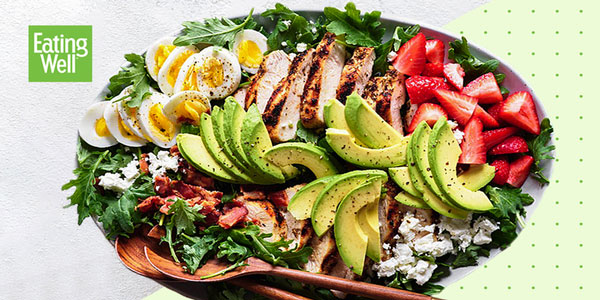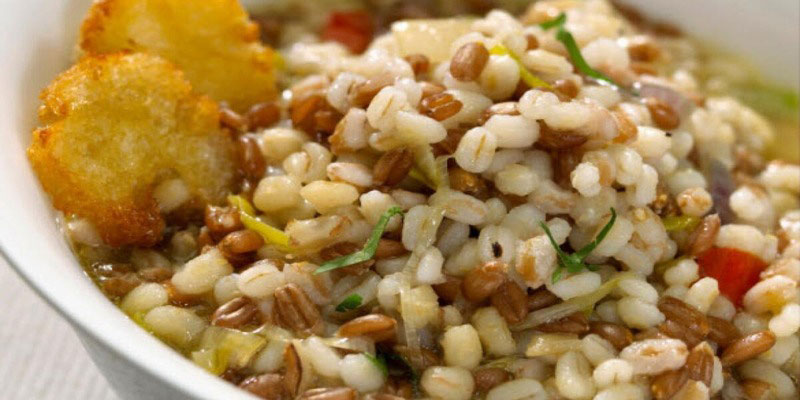
Daily Guide for a Low-Fat Meal Plan
Nov 21, 2022
Here is an example dinner for those trying to reduce their saturated fat intake. Dietary fat reduction may seem overwhelming, but it does not have to be complicated. A few easy substitutions help you design heart-healthy, low-fat meals that are also more flavorful! Here are why reducing your intake of fatty foods might be beneficial, as well as a sample day of a low-fat diet. The example menu below describes a day's worth of meals, including snacks and desserts.
How And When A Low-Fat Diet Can Help
Reducing the fat content of the foods you consume may decrease calories and saturated fat intake. An oversupply of saturated fat may raise LDL cholesterol levels, raising cardiovascular disease risk. ¹ The Centers for Disease Control and Prevention (CDC) report that heart disease is still the top cause of mortality in the United States. ² However, numerous strategies to minimize LDL cholesterol in the diet exist. Cutting down on saturated fats and boosting fiber consumption are excellent starting points. High cholesterol is often associated with hypertension, obesity, and insulin resistance. The presence of clusters of these disorders in a single individual may lead to a diagnosis of metabolic syndrome, which significantly raises the risk for catastrophic cardiovascular events. In addition to physical exercise, research has shown that diets rich in low-fat foods are associated with better health outcomes.
Low-Fat Foods

Cutting down on fat might be advantageous, but it also makes food tasteless. Fat is renowned for imparting flavor, and reducing it may result in a significant loss of flavor. Replace high-calorie, high-fat components with low-calorie taste enhancers, such as spices, fresh herbs, vinegar, and citrus.
Numerous popular low-fat packaged goods substitute fat with sugar and salt, making them even less nutritious. Many low-fat salad dressings, for instance, include more sugar and salt than their full-fat equivalents. With so many Americans consuming excessive sugar and salt levels, it is undoubtedly beneficial to read food labels and choose less processed goods.
There are several options for low-fat whole meals, including:
- Cereals, rice, oats, pasta, and other grains
- Part-skim cheeses
- lean meats and seafood
- Fruits\sVegetables
- skimmed milk
- The whites of eggs
- Legumes, including peas, lentils, and beans
Typical Meal Plan
Fat is an essential macronutrient. Thus moderation is the objective. Eliminating all fat from your diet would be challenging, and you risk losing vital nutrients such as bone-building minerals and fat-soluble vitamins. The bulk of your fat consumption should consist of high-quality fats from unsaturated sources, such as nuts, avocado, and olive oil, which improve heart health and are essential for a healthy diet. For a 2,000-calorie-per-day diet, the American Heart Association advises limiting saturated fat to 5% to 6% of total calories for those who need to decrease their cholesterol; this is equivalent to 13 grams of saturated fat per day.
Here's A Low-Fat, Balanced Food Plan
Breakfast
- 1 cup cinnamon-spiced cooked oats plus 1/2 cup fresh berries
- Two egg whites scrambled in avocado oil or coconut oil
- Cappuccino with nonfat milk
Cinnamon-flavored, whole-grain bliss topped with seasonal fruit. Protein helps maintain strong muscles, while the soluble fiber in oats and berries has been shown to reduce LDL levels.
Lunch
Thinly sliced turkey breast with tomato, spinach, and mustard on whole-grain sandwich bread
- 1 cup sodium-reduced vegetable soup
- One medium apple and one tablespoon of peanut butter
Maintain your energy levels during the middle of the day by consuming lean protein and abundant fruits and vegetables. A modest amount of peanut butter's healthful fats may be included in this dish.
Snack
- 1 cup of popcorn popped by air
- 1 pint of tiny carrots
Utilize a satiating, low-fat snack to combat a late-afternoon energy slowdown.
Dinner

- One slice of grilled salmon
- 1/4 cup prepared brown rice
- 1 cup grilled zucchini
- One glass of merlot (if you drink)
Dessert
- 1 ounce of bittersweet chocolate
- One medium orange
Conclusion
Meal planning may be a valuable tool for those attempting to reduce weight. It may help you achieve the calorie deficit necessary for weight reduction while supplying your body with the nutrients it needs to operate and be healthy. Planning your meals may also save you time and streamline dinner preparation. The most crucial parts of meal planning for weight reduction, along with a few simple recipes and other advice to help you achieve your objectives. Dietitians were engaged to create this weight reduction meal plan that removes the guesswork from preparing a week's worth of nutritious and tasty breakfast, lunch, and supper options.





